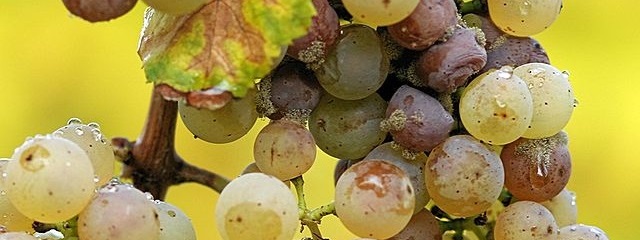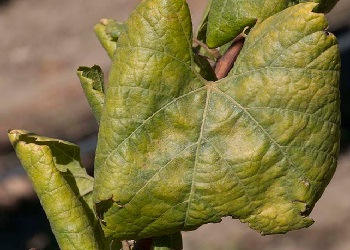Pest and Disease Management



Effective pest and disease control, integrated pest management (IPM), and organic farming practices, are crucial for maintaining grapevine health and minimizing crop loss.
Healthy grapevines produce higher-quality grapes, which translate to better-quality wine.
Insects
Insects can cause significant problems by damaging grapevines, spreading diseases, and reducing the quality and yield of the grapes.
Insects can feed on the grapes, the green parts of the plant and on the roots.
Phylloxera
Phylloxera is a tiny, root-feeding insect that devastated European vineyards in the 19th century. Phylloxera attacks grapevine roots, causing damage that ultimately kills the plant.
Most vineyards now use phylloxera-resistant rootstocks to protect against this pest.
Nematodes
Nematodes are microscopic roundworms that live in the soil and can damage grapevine roots. They weaken the vine by feeding on its roots, reducing its ability to absorb water and nutrients, leading to reduced vine health and grape yield. Some nematode species can also transmit viral diseases.

Figure: Nematodes attach to root systems with their mouth to feed, and their bodies swell into egg-filled cysts that can be visible to the naked eye.
Photo: Bonsak Hammeraas, Norwegian Institute for Agricultural and Environmental Research
Other Insects
Mealybugs

Small, sap-sucking insects that can weaken grapevines by feeding on their sap. More critically, they act as vectors for the Grapevine Leafroll Virus (see below). Their waxy coating makes them difficult to control with insecticides.
Berry Moth
A moth that lays eggs on grape clusters, and the larvae feed on the berries, causing them to rot and become susceptible to secondary infections, such as Botrytis (see below).
Leafhoppers
Small, jumping insects that feed on the underside of grapevine leaves, sucking out the sap and causing yellowing, stippling, and potentially leaf drop. Can reduce vine vigor and affect grape production.
Sharpshooters
Large, leafhopper insects known for spreading Pierce's Disease (see below). Sharpshooters are a major concern in regions like California where Pierce's Disease is prevalent.
Spider Mites
Tiny spiders that feed on grapevine leaves, causing them to turn yellow, dry out, and fall off. Can reduce photosynthesis, weakening the vines and lowering grape yields.
Vineyard Thrips
Tiny insects that feed on grapevine buds, flowers, and leaves. Lead to scarring and deformation of the fruit and leaves, reducing the overall quality of the grapes.
Fruit Flies
Can become a problem during grape ripening, especially if there is damage to the berries that allows the flies to access the fruit. Lead to sour rot and other quality issues in the grapes.

Vineyard insect netting. Source: EyouAgro
Birds and Mammals
Birds (starlings and finches) feed on ripe grapes, potentially destroying large portions of the crop, and eventually spread pests or diseases.
Vineyard managers often use nets, scare devices, or bird deterrents to protect the vines.
Mammals, including deer, rabbits, and wild boars, can damage vineyards by eating grape clusters, vines, or young shoots.
Larger mammals can also trample the vineyard, causing physical damage to the plants.
Fences, repellents, and protective measures are commonly used.

Vineyard bird netting. Source: EyouAgro
Phatogens
In biology, a pathogen is an organism or agent that can produce disease.
Fungal Pathogens
Fungi make up the largest group of pathogens, and they come in a wide variety:
- Botrytis Cinerea
- Downy Mildew
- Powdery Mildew
- Black Rot
- Eutypa Dieback
- Grape Anthracnose
- Phomopsis Cane and Leaf Spot
Botrytis Cinerea

Botrytis Cinerea (aka Botrytis Bunch Rot") is a fungal disease that can ruin grape quality by causing the fruit to decay, resulting in mummified fruit, especially in humid conditions.
Under specific conditions, Grey Rot can lead to Noble Rot, which concentrates sugars and flavors, producing sweet dessert wines such as Sauternes and Tokaji.
Mildew
 |
 |
|
| Downy Mildew | Powdery Mildew |
Downy Mildew is a fungal-like disease caused by a water mold that affects grapevine leaves, stems, and fruit. It thrives in warm, humid conditions and causes yellowish spots on leaves, which can lead to defoliation and a reduction in grape quality and yield.
Preventive fungicide sprays are often used.
Powdery Mildew is a fungal disease that appears as a white, powdery coating on the leaves, stems, and grapes. It thrives in warm, dry conditions and can reduce photosynthesis, impair vine growth, and lower grape quality.
Effective management involves sulfur-based treatments and canopy management.
Bacterial Pathogens - Bacteria
Pierce's Disease (spread by sharpshooter insects), blocks the water flow in the vine, leading to vine death.
Crown Gall occurs in several wine producing regions. It is a serious disease because it is difficult to control and can cause the death of the vine.
Grapevine Yellows are diseases associated with a bacteria-like organisms called phytoplasmas. Infected grapevines exhibit a decline in vine growth, significant yield loss, and poor fruit quality.

|  |
 |
| Pierce's Disease | Crown Gall | Grapevine Yellows |
Managing bacterial diseases is challenging, often requiring vector control, and in some cases, using resistant grapevine varieties.
For bacteria, there is no treatment or cure.
Bacteria can only be removed by removing all the infected plants.
Viral Pathogens - Viruses
 |
 |
|
| Fanleaf Virus | Leafroll Virus |
Numerous viruses can affect the vine's ability to produce fruit, disrupting photosynthesis and reducing grape quality.
Viruses are typically spread through infected planting material or by insect vectors like mealybugs. Control involves using virus-free planting stock and controlling insect carriers.
As for bacteria, there is no treatment or cure for viruses.
Viruses can only be removed by removing all the infected plants.
Integrated Pest Management (IPM)
Integrated pest management is a balanced approach for managing diseases, insects, and other pests, using a range of pest control strategies and tactics.
- Monitoring Crops
- Identifying Pests
- Developing Thresholds
- Implementing Tactics
- Record Keeping
Vector Control
Vector control, in the context of vineyards, refers to the management of vectors (organisms) that spread plant pathogens, such as bacteria, viruses, or fungi, to grapevines.
Vectors are insects or small animals that carry and transmit pathogens from one plant to another.
Vector control is crucial to prevent the spread of diseases that can impact grapevine health and yield.

Insecticide Use: Targeting insects that act as vectors, such as mealybugs, aphids, or sharpshooters, with insecticides (chemicals used to control insects) to reduce their populations and limit disease transmission.
Biological Control: Introducing natural predators or parasitoids that target the vector insects, reducing their numbers without the need for chemical treatments.
Cultural Practices: Removing infected plants, managing plant vigor, or altering the vineyard environment to make it less favorable for vectors. For example, maintaining clean field borders.
Physical Barriers: Using nets or other barriers to physically prevent vectors from reaching the vines, or implementing sticky traps to catch flying vectors.
Vector Monitoring: Regularly monitoring the vineyard for the presence of vectors using traps, visual inspections, or other surveillance methods, allowing for timely intervention before a vector population becomes problematic.